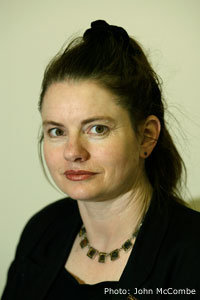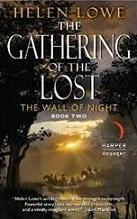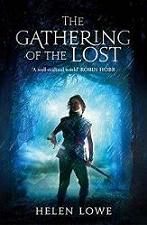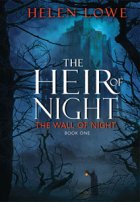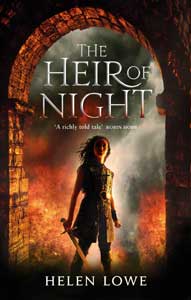Reading Older Books: “The Periodic Table” by Primo Levi
I picked up the Penguin Classic version of Primo Levi’s The Periodic Table (195 pp) in Wellington’s Marsden Bookshop, just prior to Christmas 2020, and was fascinated by the idea of using the periodic table to chart the course of a life.

And because the author was a chemist, as well as having lived through some of the 20th century’s most turbulent times, including surviving Auschwitz, I thought it would appeal to the science-and-history aficionado in my life.
A view in which I was mistaken, as it turns out, but the purchase was not wasted because I have now read it and found, overall, that it did appeal to me. 🙂

Primo Levi was Italian, and The Periodic Table was first published in Italy in 1975. The English (language) translation first appeared in 1985. The translator was Raymond Rosenthal. In 2006, the Royal Institution of Great Britain named it the “best science book ever” (following an informal vote upon a curated list.)
Although The Periodic Table does illuminate science by its reference to and discussion of chemistry’s titular periodic table, I believe it is primarily a memoir. The memoir is compiled in the form of a series of essays, and two outright fables (Lead, Mercury, and Titanium), with each essay focusing on an element of the periodic table, beginning with Argon and concluding with Carbon.
In addition to the periodic table, the link between the essays is that they largely (the two fables are the obvious exception) traverse Primo Levi’s life, beginning with his family origins (Argon) and charting significant events in his life, from youth to the present when the book was completed. (The ordering of the essays is largely chronological.)
Very often, the chapters (i.e. essays) focus on the people he has encountered: from family, his wife, and a range of friends, through work colleagues to chance-met ‘characters’, some eccentric, others fallible, but all brought to life through the author’s eyes and pen.
Due to the structure of the book, with the chapters forming a series of linked essays, I found that some of the chapters engaged me more than others. Several times, I would be building a head of reading steam after several chapters, only to be “bounced” by the next essay. Two of the three fables were the worst offenders in this respect, since they didn’t really “flow” with the rest of the book.

Nonetheless, despite these intermittent setbacks I always got back into the reading flow, and I enjoyed the overall book a great deal. I think the first chapter that really hooked me was the fourth, Iron. The essay is a wonderful character study of Sandro Delmastro, a friend of Primo Levi’s young adulthood. It focuses on their youthful friendship, but concludes with the revelation that Sandro became a partisan and was killed when trying to escape capture. The final paragraph is both tribute and epitaph:
“Today I know that it is a hopeless task to try to dress a man in words, make him live again on the printed page, especially a man like Sandro. He was not the sort of person you can tell stories about , nor to whom one erects monuments – he who laughed at all monuments: he lived completely in his deeds, and when they were over nothing of him remains – nothing but words, precisely.”
And yet, despite what the author felt to be the hopelessness of the task, in Iron Sandro Delmastro does live again on the page: compelling, vital, real.
Primo Levi was condemned to Auschwitz and survived, an experience that dominates the book, although it is not addressed in detail. The reason, given in the chapter Cerium, is because it “has been narrated elsewhere.” (Specifically, in If This Is A Man (1947; translated into English 1959 by Stuart Woolf) and The Truce (1963; translated into English 1965 by Stuart Woolf.)

“Is This A Man”: 1947 Italian cover
Cerium is the only chapter that specifically addresses Auschwitz, focusing on “iron-cerium, an alloy from which the common flints of cigarette lighters are made.” The author stole it from the lab to which he was assigned as a slave labourer, and together with his friend Alberto, laboured at night to transform the raw material into the flints that could be traded with camp personnel “to win the bread that kept us alive until the arrival of the Russians…”
In the same way that Sandro is the focus of Iron, Alberto is the heart of Cerium:
“For him renunciation, pessimism, discouragement were abominable and culpable: he did not accept the concentration camp universe, he rejected it instinctively and with his reason , and he did not let himself be tainted by it. He was a man of good and strong will, and miraculously he had remained free, and his words and acts were free: he ad not bowed his head, he had not bent his back. … I believe that nobody, in that place, was loved as much as he was.”
Alberto and Primo were separated when the front drew near Auschwitz: “He did not return, and not a trace remains of him.”

The Truce: 1963 Italian cover
The Periodic Table traverses a period of thirty years after WW2, so it is by no means all dark. In Chromium, he writes—among several other matters—of meeting his wife in the immediate postwar years:
“In a few hours, we knew we belonged to each other, not for one meeting but for life, as in fact has been the case. In a few hours I felt reborn and replete with new powers, washed clean and cured of a long sickness, finally ready to enter life with joy and vigor…”
In a world grown cynical ca. seventy five years—albeit with far less cause than Primo Levi—it is both moving and inspiring to read such a testament to the power of love.
In my view, the true miracle reflected through the book is that Primo Levi could truly survive Auschwitz, not just physically but with his humanity intact. The Periodic Table is characterized throughout by the author’s intelligence and humour; he writes, always, with empathy, insight, and understanding of and for his fellow human beings—as well as of science.

So as you’ve probably gathered, despite the occasional essay that did not quite hold me, overall I am recommending the book. I believe it is deservedly a Penguin Classic and I can see why it was voted “best science book ever” in 2006. Furthermore, on the strength of The Periodic Table I intend reading Primo Levi’s other books as well.

